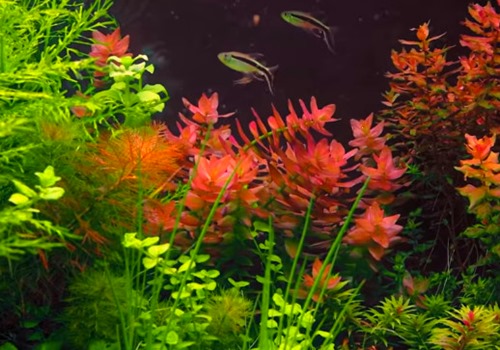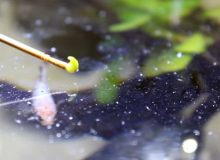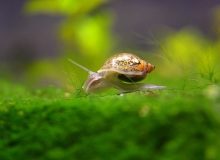13 Effective Methods to Remove & Control Freshwater Aquarium Algae
Algae is one of the most common — and frustrating — issues faced by freshwater aquarium keepers. A little algae can be natural and even beneficial, but when it starts covering your glass, plants, and decorations, it quickly becomes a problem. Left unchecked, algae can ruin the look of your aquascape and throw off the balance of your tank’s ecosystem.
Luckily, with the right combination of methods, algae can be managed or even eliminated entirely. From improving water quality to using algae-eating fish and adjusting your lighting, there are multiple ways to take control — without resorting to harsh chemicals.
In this guide, we’ll walk you through 13 proven methods to tackle algae in freshwater aquariums, so you can restore clarity, balance, and beauty to your tank.
- 1. Reduce Lighting Time
- 2. Manual Removal: Scrub Smart, Not Hard
- 3. Perform Partial Water Changes: Dilute the Problem
- 4. Avoid Overfeeding and Overstocking: Less Is More
- 5. Algae Eaters - Fish, Snails And Shrimp
- 6. Competitive Plants - CO₂ Injection (for Planted Tanks)
- 7. Safe Chemical Algae Killer
- 8. Water Clarifier
- 9. UV Sterilizer
- 10. Improve Water Flow and Filtration: Keep It Moving
- 11. Balance Nutrients: Target Nitrate and Phosphate
- 12. Blackout Treatment: Cut the Light Completely
- 13. Deep Substrate Cleaning: Don’t Neglect the Bottom
1. Reduce Lighting Time

Algae thrive in abundant light, especially sunlight, which accelerates their growth. To minimize this, set up your tank away from windows to avoid direct sunlight exposure. If moving the tank isn’t possible, consider adding a backdrop or draping a black cloth behind the aquarium to block sunlight.
The most effective way to prevent algae growth is to adjust the tank’s conditions, particularly by reducing lighting time. Keep the light on for 8–10 hours daily. If your aquarium includes plants, choose an appropriate planted aquarium LED light based on the plants’ needs (low, medium, or high light demand).
To avoid forgetting to turn off the lights, install a timer for your light system to automate a normal day-night cycle. An inexpensive socket timer is easy to use and compatible with most LED light fixtures from various brands.
2. Manual Removal: Scrub Smart, Not Hard
 Aqueon algae cleaning magnet #ad
Aqueon algae cleaning magnet #ad
No matter how balanced your tank is, some algae growth is inevitable—especially on the glass, hardscape, and decorations. Manual removal is often the first and most direct step in algae control, but doing it properly makes a big difference.
Clean the Glass Regularly: Use an algae magnet cleaner, sponge, or razor scraper (for glass tanks) to remove algae buildup from the front and side panels. Magnetic scrubbers are especially convenient, allowing you to clean without getting your hands wet.
Tip: Use acrylic-safe tools if your tank isn’t glass to avoid scratching the surface.
Don’t Let Debris Linger: Dislodged algae can settle back into the tank or become food for more algae growth. Use a gravel vacuum or siphon immediately after scrubbing to remove floating debris and prevent it from decomposing in the tank.
Maintain Decor and Plants: Once a month, take out artificial decorations and gently scrub them with warm tank water (not soap). For live plants, remove algae-covered or dying leaves and trim excess growth to keep plants healthy and competitive against algae.
Manual removal can feel repetitive, but it prevents algae from getting out of control. Combined with long-term prevention strategies, it lays the foundation for a clean, thriving aquarium.
3. Perform Partial Water Changes: Dilute the Problem

Regular partial water changes are one of the most effective ways to reduce nutrients that feed algae—especially nitrates and phosphates. Even in a well-maintained tank, these nutrients naturally build up over time.
How Much and How Often? Aim to change 15–25% of the water once per week. In tanks with algae issues, you might temporarily increase this to twice per week until the problem is under control. Use a gravel vacuum to siphon waste from the substrate—especially uneaten food, fish waste, and decaying plant matter, which are often invisible sources of algae fuel.
Don’t Forget the Filter: While changing water, gently rinse filter media in old tank water, not tap water, to preserve beneficial bacteria. A clogged or dirty filter reduces flow and circulation, giving algae a chance to take hold—especially in dead spots. Maintaining water quality doesn’t just fight algae—it also improves oxygenation, fish health, and plant growth, all of which make your tank more algae-resistant over time.
4. Avoid Overfeeding and Overstocking: Less Is More

One of the most common—and preventable—causes of algae blooms is excess nutrients, often introduced through overfeeding or overstocking. Algae thrive on the same excess nutrients that result from fish waste and leftover food—mainly nitrogen, phosphorus, and light.
Feed With Precision: Only feed your fish what they can eat within 2–3 minutes, once or twice a day depending on the species. Any uneaten food quickly breaks down into ammonia and nitrate, which directly fuel algae growth.
 MagFeeder Magnetic Feeding Ring #ad
MagFeeder Magnetic Feeding Ring #ad
Tip: Use a feeding ring to keep food in one area and monitor how much your fish actually eat.
Stock Wisely: Each fish you add to your tank increases the bioload—a combination of waste, respiration, and uneaten food. In overstocked tanks, even good filtration can struggle to keep nutrient levels in check.
5. Algae Eaters – Fish, Snails And Shrimp
 Octocinclus Catfish
Octocinclus Catfish
Algae eaters are valuable allies in controlling algae. Below is a list of common algae-eating species:
- Snails (ramshorn, nerite, apple, etc.): Effective at removing algae but may reproduce rapidly, risking snail outbreaks, and can eat plants.
- Butterfly Goodeid (Ameca splendens): Consumes green hair algae but may be aggressive toward other tank inhabitants.
- American Flagfish (Jordanella floridae): Peaceful and easy to care for, they eat hair algae and some Siamese algae.
- Otocinclus Catfish (Otocinclus affinis): Eats green and brown algae, peaceful, and ideal for small tanks.
- Common Plecos (Glyptoperichthys multiradiatus, Hypostomus punctatus): Eat green, brush, and brown algae but grow large and may disrupt planted tanks. Older specimens eat less algae.
- Bristlenose Catfish (Ancistrus sp.): Hardy, good algae eaters, suitable for small tanks.
- Siamese Algae Eater (Crossocheilus siamensis): Consumes green, brush, and brown algae but may eat fine-leaved plants like mosses, hairgrass, and mayaca.
- Amano Shrimp (Caridina japonica): Eats most algae, including brown and hair algae.
- Cherry Shrimp (Neocaridina davidi): Consumes soft algae but is sensitive to water conditions, requiring many to be effective.
For saltwater tanks, small hermit crabs, snails, and fish like yellow tangs, blennies, and angels feed on algae and help control its growth.
6. Competitive Plants – CO₂ Injection (for Planted Tanks)

Both plants and algae rely on phosphates and nitrates as primary nutrients. In a cycled aquarium, fish and nitrifying bacteria produce nitrates, feeding both plants and algae. However, plants and algae thrive under different conditions. By optimizing water quality for plants, you can enable them to outcompete algae, effectively starving the algae.
Plants require a balance of light, carbon dioxide (CO2), nitrates, phosphates, and potassium to grow healthily. Nitrates and phosphates are naturally produced from fish waste, uneaten food, and decaying plant matter. Supplementing CO2 and potassium in sufficient quantities allows plants to absorb more nutrients, reducing what’s available for algae. This competitive pressure often suppresses algae outbreaks naturally.
CO₂ injection also promotes overall plant health—leading to denser growth, better color, and fewer dying leaves (which can rot and feed algae). It’s especially helpful in tanks with carpeting plants or fast-growing stems. However, it requires careful monitoring to avoid pH swings or stressing fish—so be sure to use a drop checker and timer for best results.
7. Safe Chemical Algae Killer
 API ALGAEFIX Algae Control 16-Ounce Bottle #ad
API ALGAEFIX Algae Control 16-Ounce Bottle #ad
API Algaefix is a liquid algaecide designed to control common algae problems in freshwater aquariums. Its active ingredient, polyquaternium-based polixetonium chloride, works by disrupting the cellular structure of algae, causing them to break down and die off. When used correctly, it is effective against green water, hair algae, and surface film algae, without harming most freshwater fish and plants.
However, caution is necessary—Algaefix should not be used in tanks that house shrimp, snails, or other invertebrates, as they are highly sensitive to the treatment. For best results, it’s important to follow dosing instructions carefully, maintain strong water circulation or aeration during treatment, and perform partial water changes afterward to remove decomposing algae. While Algaefix offers a fast-acting solution, it is most effective when used alongside proper tank maintenance and nutrient control to prevent algae from returning.
8. Water Clarifier

API ACCU-CLEAR Freshwater Aquarium Water Clarifier #ad
If previous methods are insufficient or your tank faces a severe algae problem, consider a natural algae remover like API ACCU-CLEAR Clarifier. This additive clumps organic matter and contaminants, making them easier for the filter to remove. It’s particularly useful for clearing water cloudiness, especially after initial tank setup.
Temporary cloudiness may occur after adding the clarifier due to its reaction with contaminants, but the water will clear once the filter removes the clumped particles. This is a fast way to improve water clarity, but if you prefer to avoid chemicals, consider the next method.
9. UV Sterilizer
 COODIA Internal Green Water Killer #ad
COODIA Internal Green Water Killer #ad
An aquarium UV sterilizer uses ultraviolet light to eliminate free-floating agents in the water as it passes through the sterilizer’s UV chamber. It introduces no chemicals, making it safe for fish, corals, and invertebrates. It doesn’t harm beneficial bacteria on filter media or gravel.
UV sterilizers are easy to set up, similar to an internal aquarium filter, and are highly effective at clearing cloudy or green water within days. They also eliminate disease-causing bacteria and viruses, promoting fish health.
10. Improve Water Flow and Filtration: Keep It Moving

Dead spots in your aquarium—areas where water barely circulates—often become algae breeding grounds. Improving water flow helps distribute nutrients more evenly, prevents detritus buildup, and keeps surfaces cleaner. Adding a small circulation pump, redirecting filter outlets, or even switching to a more powerful filter can make a noticeable difference in algae control.
Beyond water movement, filtration quality is key. A well-maintained filter removes uneaten food, waste, and dissolved organic compounds before they decay and release nitrate or phosphate—fuel for algae. Make it a habit to rinse mechanical media weekly (using tank water) and replace chemical media like activated carbon or phosphate removers as recommended.
11. Balance Nutrients: Target Nitrate and Phosphate
Even if your tank looks clean, invisible nutrients may be feeding your algae. Two of the biggest culprits are nitrate (NO₃⁻) and phosphate (PO₄³⁻), both of which build up from uneaten food, fish waste, and decaying plant matter. Use a test kit to regularly monitor these levels—keeping nitrate under 20 ppm and phosphate below 0.5 ppm can significantly hinder algae growth.
When levels are too high, water changes alone might not be enough. Consider using chemical filtration (like Seachem PhosGuard #ad or API Nitra-Zorb #ad) to pull nutrients directly from the water. In planted tanks, focus on achieving balance: too much fertilizer can trigger algae, while too little weakens plant growth—giving algae an opportunity to dominate.
12. Blackout Treatment: Cut the Light Completely
Sometimes, the best way to fight algae is to starve it of light entirely. A blackout treatment involves turning off all lights and completely covering the tank (with dark cloth or cardboard) for 3 to 4 days. Most nuisance algae—especially green water and string algae—rely heavily on constant light, and the absence of it forces them into decline or death.
During this period, keep the filter and air pump running as usual, but skip feeding to reduce waste. Healthy fish and most plants can easily survive a short blackout, but the stress can collapse even a heavy bloom of algae. Once the blackout ends, resume lighting slowly and review your lighting schedule or intensity to prevent recurrence.
13. Deep Substrate Cleaning: Don’t Neglect the Bottom
The substrate is often overlooked when it comes to algae prevention. Over time, leftover food, plant debris, and fish waste accumulate under gravel or sand. This hidden detritus slowly breaks down, leaching nutrients back into the water column—creating a buffet for algae. Even in planted tanks, mulm buildup around roots can become problematic.
Using a gravel vacuum or siphon, perform regular deep cleans in sections of your substrate during water changes. Pay special attention to low-flow areas behind rocks or under décor. For aquariums with fine sand or delicate plants, gently stirring the surface layer can also help release trapped debris without uprooting plants or clouding the water.







Leave a Reply